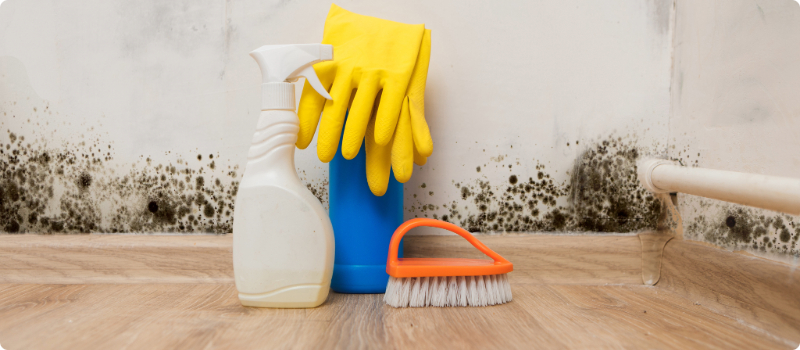
What are insurance endorsements and riders?
Updated March 1, 2021 . AmFam Team
Insurance endorsements or riders are extra coverages in the form of amendments to an insurance contract. They typically enhance the protection and terms of the initial policy and are bought separately from your policy's standard coverages. You can add them when purchasing your insurance, during your coverage period and while renewing your policy.
Endorsements and riders are added to an insurance policy to help fill coverage gaps or uncovered events in your current policy. They help you build a customized policy that fits your unique coverage needs.
When it comes to insurance protection, it’s important to understand what your base policy actually covers. And with all the confusing insurance jargon out there, sometimes that can be difficult. Educating yourself is the first step to gaining confidence in your coverage, and we’re here to help. Let’s start by learning about endorsements and riders — they’re key pieces of your policy that can better protect everything you’ve worked so hard for.

How do insurance endorsements work?
When you make changes to your existing policy — adding or removing coverages, increasing or decreasing coverage limits, for example — you might be doing so with an endorsement or rider. They can be added at the time of purchase or at any point during your coverage, even at the time of renewal with certain policies.
Endorsements are used when base coverage is not enough, or when a change mandates additional coverage. A great example of that may be something like a jewelry purchase. You’ve increased the value of your personal property — perhaps exceeding the limits of your current policy coverage — so you would need to pick up an endorsement to cover that cost difference.
Although endorsements for valuables may come at an additional cost, they can offer real benefits by boosting your protection. Some endorsements exclude coverage — where certain losses or events are negated or not covered.

Why do I need insurance riders and endorsements?
The purpose of an endorsement is to enhance your base policy — whether it’s your home, car or something else. They give you control of your coverage so you can customize the policy to your needs.
Endorsements and riders allow you to fine tune your coverage by either adding, eliminating or modifying the coverage on your policy. Maybe you’ll have higher limits of coverage or be protected for a broader range of losses. Whatever the case, policy endorsements are meant to give you extra peace of mind so that — in the event of the unexpected — you’ll have the right protection in place.
The benefits of having insurance endorsements
Insurance endorsements apply to a variety of things in your base policy — from additional protection on your personal items, to a simple address change. While the option to customize your policy at any time is certainly a benefit in itself, we think there are a couple of pretty common situations where an endorsement can really enhance the way you're protected:
Improved coverage for your belongings
When your personal belongings are valued beyond the sublimits of your policy, your insurance may not cover their total value without a rider. Sublimits are the maximum coverage on your policy for a specific type of loss, like jewelry.
Here’s how enhancing your coverage with riders and endorsements can really payoff: Suppose you own $5,000 in jewelry and the sublimit for personal property coverage on your homeowners initial policy is $3,500. Without an endorsement, there would be a $1,500 gap that insurance wouldn’t pay.
By adding a rider to your policy — and paying for additional coverage on personal property, such as jewelry — you would spend a little extra per year for that added protection and that can translate to greater peace of mind.
Affordable deductibles for valuable items
Another great benefit of having insurance endorsements is that you won’t have to worry about some of the traditionally higher deductibles associated with personal property coverage. For example, if you had jewelry valued at $5,000 stolen, and your base policy’s property deductible is $2,000, you would only receive $3,000 on your claim.
But with a rider for the jewelry in place, you can select a deductible that works for your budget. If you chose an endorsement deductible of $100, your claim would reimburse you $4900 for the covered loss after meeting that deductible. Note that itemized endorsement deductibles for personal property range from $0 - $2,500.

Examples of common insurance endorsements
An American Family homeowners policy gives you a specific amount of personal property and liability protection, but what if you need coverage beyond that limit? What if you run a business from your home, have a finished basement or own valuable jewelry? You’ll want to make sure you have the proper protection — and that’s where insurance endorsements and riders come in.
Home business coverage
You may think that your small home business is covered by your standard homeowners insurance policy, but that’s not the case. Actually, if you’re planning on conducting any business from your home and want coverage to protect you from losses related to your business, you’ll need to add limited home business coverage and/or business property coverage.
With it, you’ll have protection for covered events like a customer slipping and falling on your front steps or coverage for damages to your business property, such as a fire ruining your business’ office equipment.
Itemized personal property coverage
Most homeowners policies cover jewelry, but the coverage has a set limit. So, if the total value of your jewelry is more than the jewelry sublimit in your policy, you’ll want to consider adding coverage.
You can do this by increasing your total coverage limit for jewelry, or by itemizing specific high-value pieces of jewelry, which — in addition to providing higher dollar amounts of coverage — also provides coverage for a broader range of losses as well.
Sump pump failure coverage
Our water damage and sump pump failure coverage is designed to mitigate the cost of repairs caused by water leaking into a home due to a backed-up drain, malfunctioning sump pump or other pipe and drain faults.
While it’s not automatically included in a homeowners policy, it can easily be added on for a fraction of what it would cost to repair and replace water-damaged items in your home. Find out more about water backup coverage.
Endorsements for other insurance needs
Riders and endorsements aren’t just available for your home policy — you can stack them onto your renters policy, condo, auto and watercraft coverage, to name a few. No matter what you’re looking to protect, we can customize your coverage to make sure you’ve got the policy that’s right for you.

How long does an endorsement stay on my policy?
An endorsement will stay active until your in-force policy expires. It can be renewed under the same terms and conditions as your basic policy. Though, if your endorsement specifies a term limit, it’ll be valid up to that point only.
How to get insurance endorsements
Educate yourself on your options for endorsements by setting up a personal insurance review with your American Family agent. They’re your go-to for expert advice on all things insurance and they’ll guide you through your policy to help you determine if there are endorsements you should to consider. Connect with yours today.
This information represents only a brief description of coverages, is not part of your policy, and is not a promise or guarantee of coverage. If there is any conflict between this information and your policy, the provisions of the policy will prevail. Insurance policy terms and conditions may apply. Exclusions may apply to policies, endorsements, or riders. Coverage may vary by state and may be subject to change. Some products are not available in every state. Please read your policy and contact your agent for assistance.
*Customers who bundle home and auto insurance policies may save up to 23% on both policies together (as of December 2023). Discounts may vary by state, property, policy form and company underwriting the home and/or auto policy. Discounts may not apply to all coverages on a home or auto policy.

